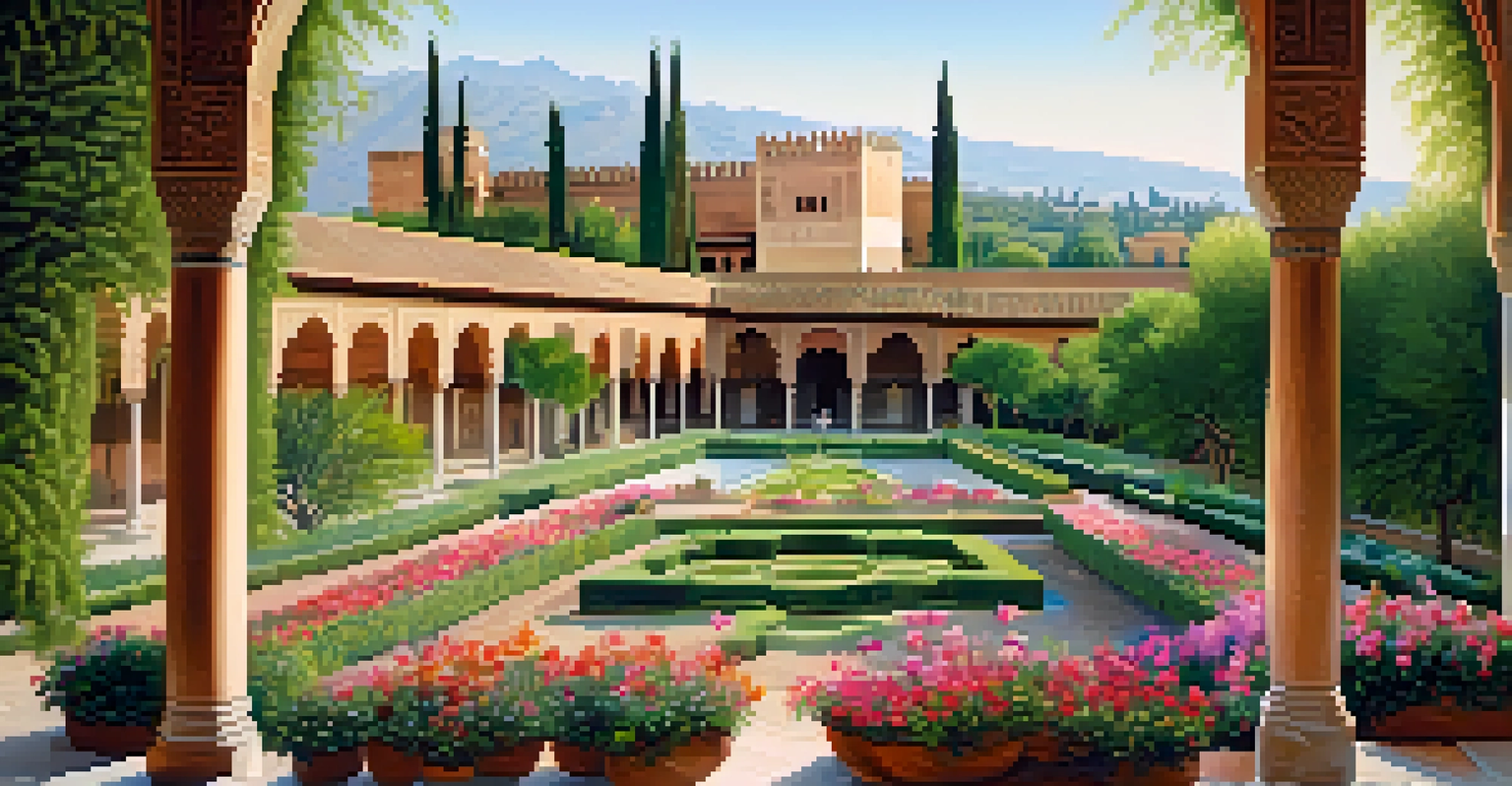Iconic Historic Buildings and Their Impact on Tourism

The Allure of Historic Buildings in Tourism
Historic buildings are more than just structures; they are gateways to the past. Tourists are naturally drawn to these architectural gems, eager to immerse themselves in the stories they tell. From ancient castles in Europe to colonial homes in America, these sites provide a tangible connection to history that modern buildings often lack.
The past is not dead; it is living in us, and we are living in it.
Visiting a historic site can evoke a sense of wonder and curiosity about the lives of those who came before us. For instance, stepping inside the Colosseum in Rome allows visitors to imagine the grandeur of ancient gladiatorial games. This ability to transport individuals to another time adds an irresistible charm that many travelers seek.
Moreover, these buildings often become iconic symbols of their cities, creating a unique identity that attracts visitors. The Eiffel Tower, for example, is not just a stunning piece of architecture; it’s a representation of Paris itself, drawing millions of tourists each year who want to experience its magic.
Cultural Heritage and Community Identity
Historic buildings serve as custodians of cultural heritage, preserving the stories and traditions of a community. They help maintain a sense of identity for local residents while also educating visitors about the region's unique history. This dual role fosters a deeper appreciation for cultural diversity.

For example, the Alhambra in Spain is not only an architectural marvel but also a testament to the rich history of the Moors in the Iberian Peninsula. Such sites encourage tourists to learn about the intricate tapestry of cultures that have shaped the area, bridging gaps between past and present.
Historic Buildings Enhance Tourism
Tourists are drawn to historic buildings for their rich stories and unique connection to the past.
Communities often rally around their historic sites, using them as focal points for events and festivals that celebrate local culture. This communal engagement not only strengthens community bonds but also enhances the tourist experience, making it more immersive and meaningful.
Economic Growth Driven by Tourism
The presence of iconic historic buildings can significantly boost a region's economy through tourism. Visitors come to explore these sites, leading to increased spending on accommodations, dining, and local attractions. This influx of tourism can create jobs and support small businesses in the area.
Preservation of one's own culture does not require contempt or disrespect for other cultures.
Take the case of Machu Picchu in Peru, a UNESCO World Heritage Site that attracts hundreds of thousands of tourists annually. The revenue generated not only supports local economies but also funds conservation efforts to preserve the site for future generations.
Furthermore, the economic benefits extend beyond the immediate vicinity of the historic building. Increased tourism can lead to improved infrastructure, such as better public transport and enhanced services, which ultimately benefits both locals and visitors alike.
Preservation Challenges Facing Historic Sites
While the tourism boom can bring benefits, it also presents challenges, particularly regarding the preservation of historic buildings. Increased foot traffic can lead to wear and tear, threatening the integrity of these irreplaceable structures. Balancing tourism with conservation efforts is essential.
For instance, the Great Wall of China faces significant erosion due to millions of visitors each year. Authorities are now implementing measures to manage visitor access and protect its longevity while still allowing people to experience its grandeur.
Economic Impact of Historic Sites
Iconic historic sites boost local economies through increased tourism spending and job creation.
Moreover, funding for preservation often comes from tourism itself, creating a cycle where the very thing that brings in revenue can also cause damage. It’s a delicate balancing act that requires careful planning and community involvement to ensure these historic landmarks endure for future generations.
The Role of Technology in Tourism
Technology has revolutionized the way tourists engage with historic buildings. Virtual tours, augmented reality apps, and interactive exhibits allow visitors to experience these sites in new and exciting ways. This tech-savvy approach can attract a younger demographic eager for unique experiences.
For example, many historic sites now offer apps that provide audio guides and detailed historical context, enhancing the visitor experience. This blend of education and entertainment can make learning about history feel engaging and accessible.
Additionally, technology can aid in preservation efforts by monitoring structural integrity and environmental conditions. By utilizing modern tools, caretakers can ensure these historic buildings remain safe and intact, while still sharing their stories with the world.
Local Festivals Celebrating Historic Significance
Many historic buildings serve as the backdrop for local festivals, creating vibrant celebrations that attract tourists. These events often highlight the cultural significance of the site, providing visitors with a deeper understanding of its history. It’s a unique way to engage both locals and tourists in a shared experience.
For instance, the annual Festival of Lights at the Brandenburg Gate in Berlin transforms the iconic monument into a canvas of light and art, drawing crowds from all over. Such festivals not only celebrate the building itself but also foster community spirit and pride.
Balancing Tourism and Preservation
While tourism benefits historic sites, it also poses challenges for their preservation that must be carefully managed.
These gatherings can also stimulate local economies, as surrounding businesses benefit from the increased foot traffic. In this way, historic buildings act as catalysts for cultural events that enrich the tourist experience while supporting the local community.
Future Trends in Historic Tourism
As tourism continues to evolve, so too will the ways we engage with historic buildings. A growing emphasis on sustainable tourism seeks to protect these sites while still allowing people to enjoy them. This shift encourages responsible travel that prioritizes preservation.
For example, many destinations are now implementing caps on the number of visitors allowed at a time to minimize environmental impact. This approach not only helps to preserve the site but also enhances the overall experience for tourists, allowing for a less crowded atmosphere.

Additionally, there’s a rising trend in experiential travel, where tourists seek authentic connections with local communities. This could mean participating in workshops or guided tours led by locals, fostering a deeper appreciation for both the historic site and its cultural context.